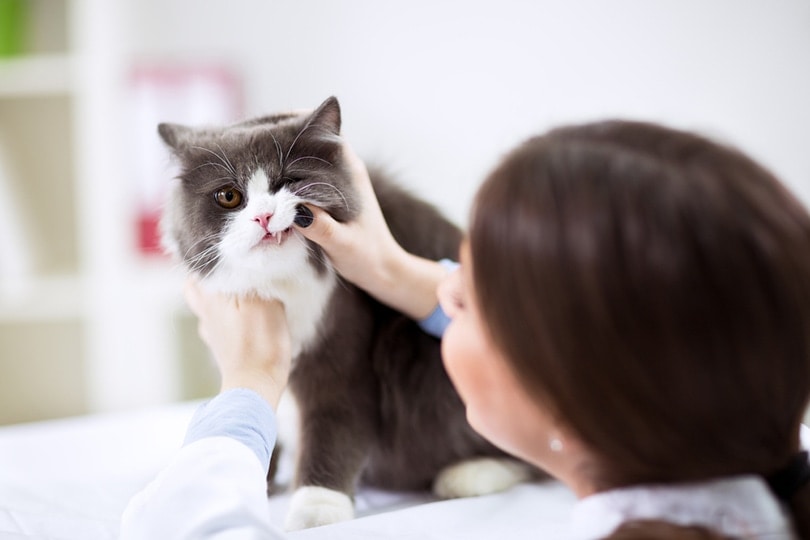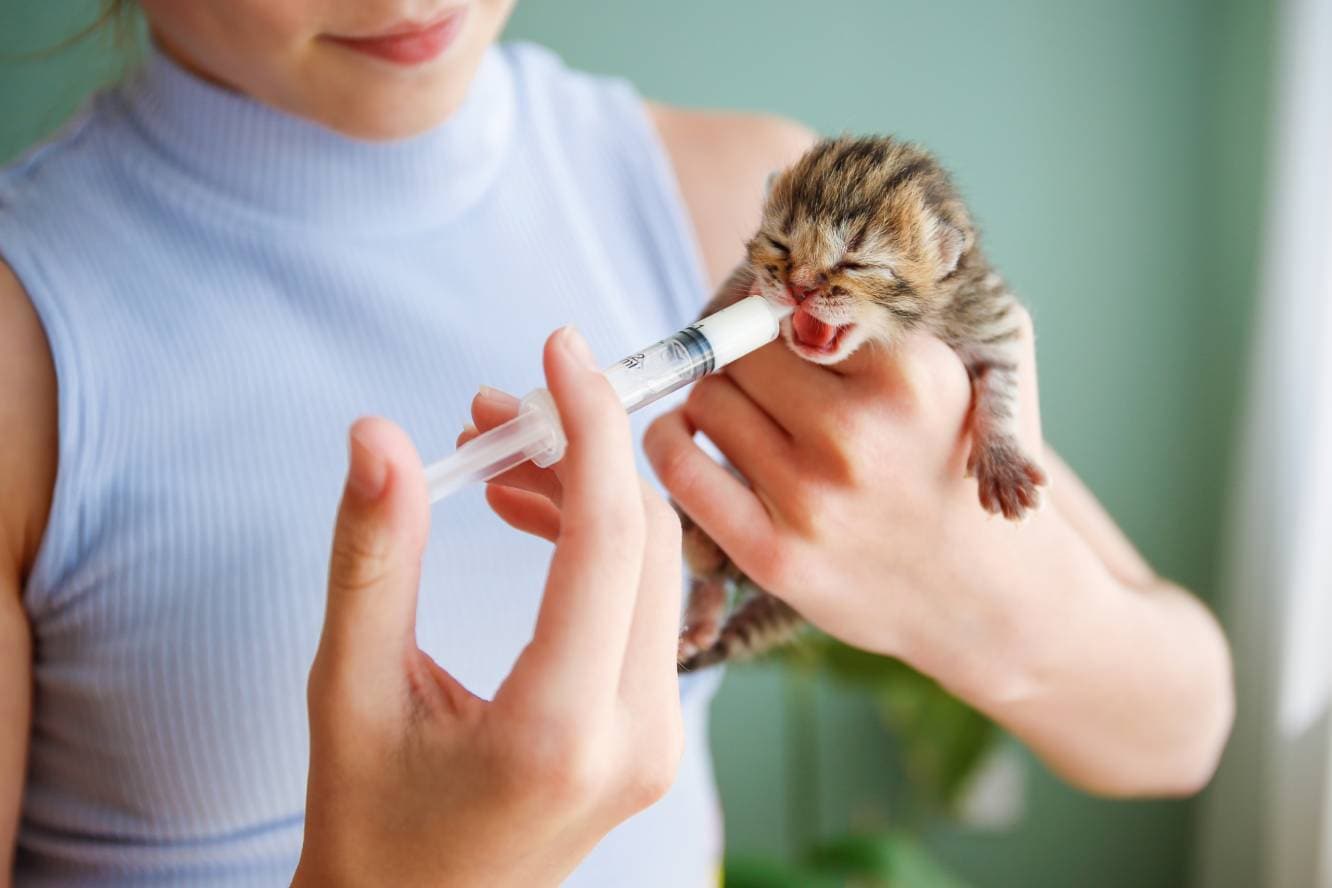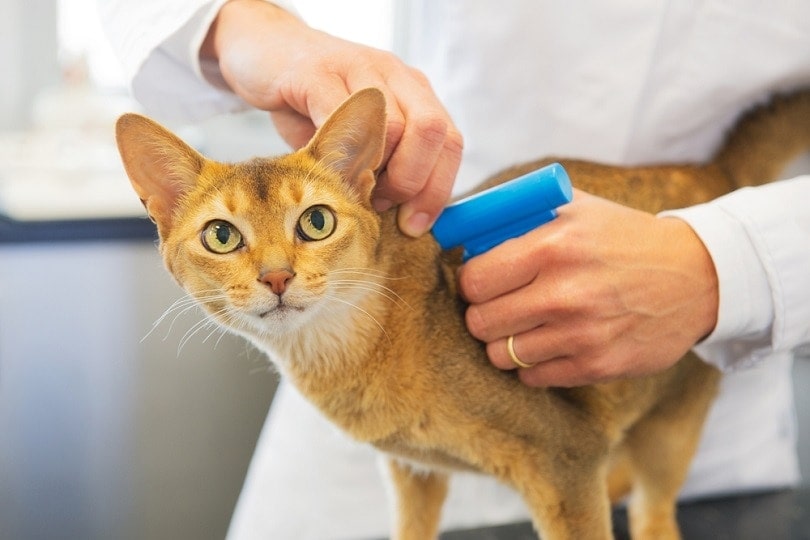Russian Blue vs. British Shorthair: Differences Explained (With Pictures)
Updated on
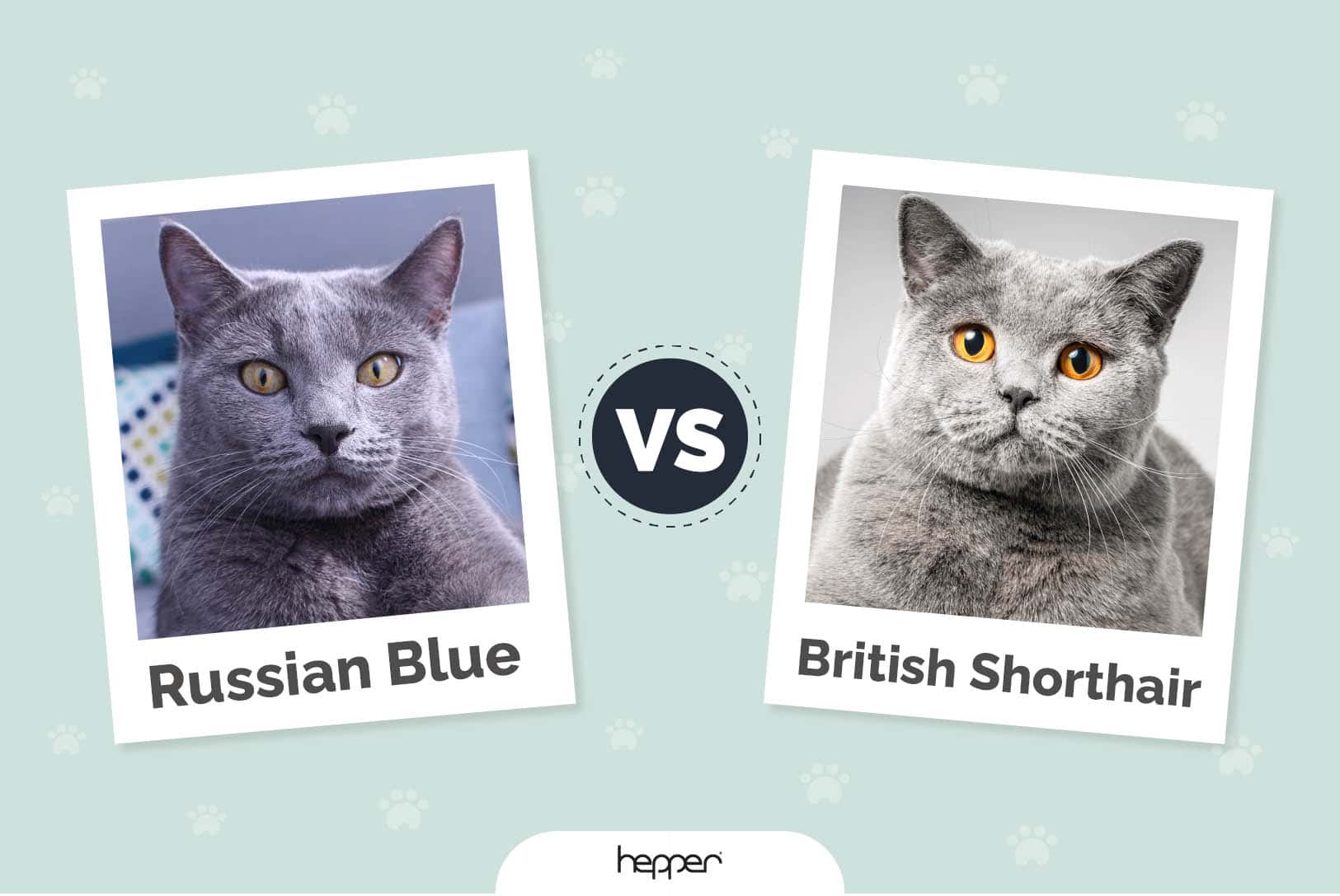
Unless you’re a cat fanatic like us, it can be hard to tell the Russian Blue and British Shorthair apart. Both of these cats are incredibly similar.
During the World Wars, the breeding stock of the British Shorthair was decimated. Therefore, breeders decided to bring in other cats to expand the gene pool and prevent the breed from dying. One of these breeds was the Russian Blue, mainly because the breed looked pretty similar to the British Shorthair. Today, this sort of crossbreeding isn’t allowed under the breed standard. However, the British Shorthair was still changed forever by the introduction of Russian Blue genetics.
Despite this, the Russian Blue and British Shorthair are not the same breeds. They have several differences that may make one breed better for you than the other. Below, we’ll look at these differences to help you choose the best cat as your companion.
Visual Differences
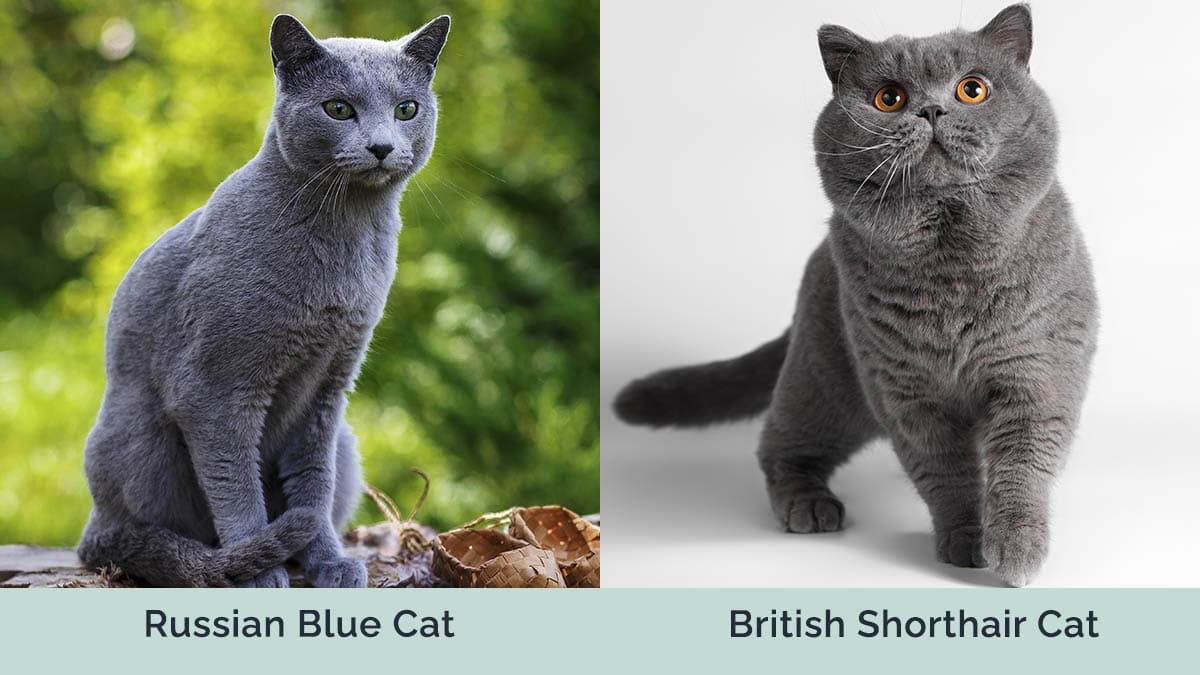
At a Glance
- Average height (adult): 8–10”
- Average weight (adult): 7–12 pounds
- Lifespan: 15–20 years
- Exercise: 2+ hours a day
- Grooming needs: Very little
- Family-friendly: Yes
- Other pet-friendly: Often
- Trainability: Intelligent, Active, Aloof
- Average height (adult): 12–14”
- Average weight (adult): 9–20 pounds
- Lifespan: 15–20 years
- Exercise: 1+ hours a day
- Grooming needs: Very little
- Family-friendly: Yes
- Other pet-friendly: Often
- Trainability: Easygoing, Playful, Affectionate
 Russian Blue Overview
Russian Blue Overview
The Russian Blue has the same striking blue coat as the British Shorthair. Its coat is also dense and short, making it look similar to the British Shorthair. However, this breed has its own temperament and traits that set it apart from the British Shorthair.
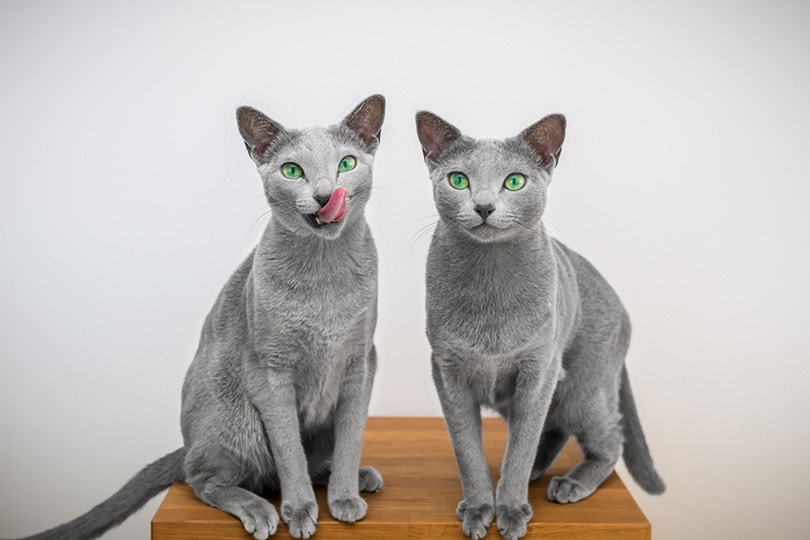
Care
The Russian Blue is very easy to care for. Its traditional coat requires minimal grooming. Typically, this cat takes care of its own coat. Compared to other breeds, the Russian Blue sheds minimally. Therefore, you don’t need to brush the cat during shedding season. You commonly see the Russian Blue appearing on “hypoallergenic cat breed” lists for this reason, though it isn’t 100% hypoallergenic.
Though you don’t have to brush a Russian Blue very often, you need to trim its nails regularly and check its ears. These simple grooming tasks should only take a few minutes, but they are vital to keep your feline healthy.
Russian Blues tend to be very smart. You can train them to play fetch, perform other tricks, and even walk on a leash. However, this intelligence also means that they require more mental stimulation. These cats need playtime and quickly become bored, and they are not necessarily the best breed for those that want a “hands-off” pet.
You can expect the Russian Blue to require quite a bit of exercise. It isn’t that they’re prone to obesity, but they have a lot of energy in their adult years. Therefore, you should invest in plenty of toys and climbing structures.
Health
Russian Blues are extremely healthy. They are pedigreed cats. However, unlike most purebred cats, they are not prone to genetic health conditions. Therefore, cats are usually not genetically tested before being bred, as it is largely unnecessary.
That doesn’t mean that these cats never get sick, however. Russian Blues are prone to health problems that affect all modern cats, including obesity. You should watch your cat’s weight and always feed it according to the instructions on the cat food container. If your pet seems to be gaining weight, speak with your vet. Some cats are more prone to weight gain than others, though all cats’ weight can be controlled.
You should also get your cat vaccinated as recommended by your vet. Many feline diseases can cause pain and death that are completely preventable with vaccinations. Therefore, be sure to vaccinate your cat according to the recommended schedule.
These cats live a pretty long lifespan due to their lack of health problems. While many other breeds often develop health issues by age 12, Russian Blues can easily reach 20 without serious health problems.
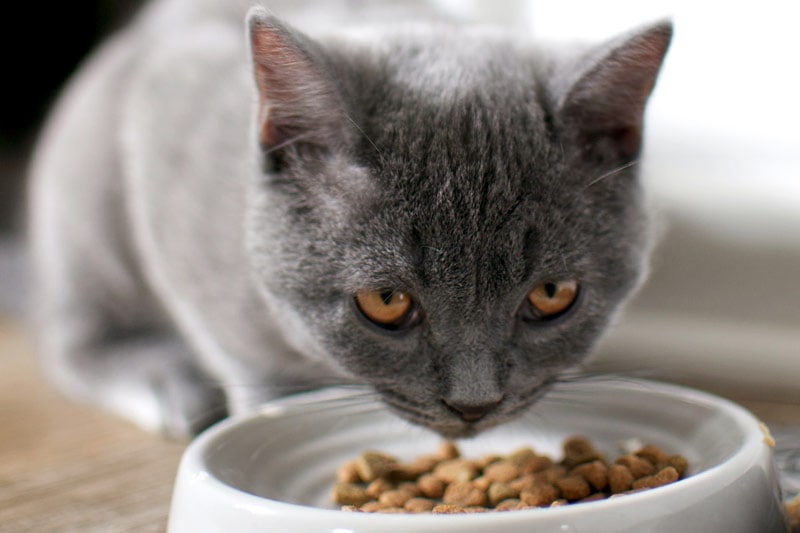
Size
Russian Blues are considered small to medium cats. They are a slender breed that tends to stay on the skinnier side. Therefore, they often weigh less than they look. They may weigh anywhere from 7–12 pounds and reach up to 10” in height.
Russian Blues are pretty small compared to several other purebred cat breeds, including the British Shorthair.
Temperament
The Russian Blue tends to be friendly with its owner and family members. They aren’t exactly lap cats, but they often enjoy attention from humans they know. They can be wary of newcomers, however. Don’t be surprised when your cat hides under the bed whenever you have friends over.
Socialization plays a large role in this. If you introduce your cat to many people at a young age, it may be more open to strangers. Still, they’re relatively wary of strangers. These cats are also quite energetic. They are playful and carry many “kitten-like” characteristics into adulthood.

Suitable For:
Russian Blues will follow their owners around the house and get very attached to their family members. These cats will greet their owners at the door and happily sit with you on the couch. They are even well-tolerated by those with allergies. However, they aren’t the friendliest or cuddliest cats out there.
British Shorthair Overview
The British Shorthair is a larger cat developed in Britain. On top of being tall and long, these cats are also very bulky. They have a very “rounded” appearance that makes them look a bit like teddy bears.
These felines are best known for their easygoing nature. They’re affectionate without being terribly needy. These temperament traits make them one of the most popular breeds around the world.
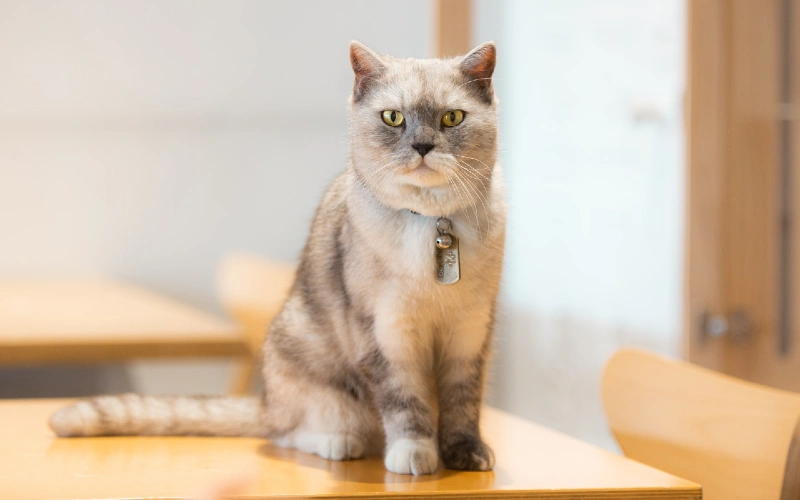
Care
The British Shorthair has a short, dense coat that requires minimal grooming but sheds regularly. Therefore, it is often recommended to brush your cat about once a week. This session is more to reduce shedding by removing dead fur than anything. During seasonal shedding periods, you may have to brush your cat even more.
Like all cats, you’ll also have to trim your British Shorthair’s nails and check its ears at least weekly. You won’t always need to clean your cat’s ears. However, if you notice any debris, you should remove it gently with a cotton ball. Do not shove anything into your cat’s ear, though, as this can cause damage.
These cats remain pretty playful into their adulthood. However, they aren’t particularly active. In fact, some of these cats can be incredibly lazy, which contributes to their obesity problem. You should aim to exercise your British Shorthair at least once a day with a play session, especially if they’re on the heavier side. Luckily, because these cats are playful, exercising them isn’t often very hard.
Plan to invest in climbing structures and plenty of cat toys. Your feline should have plenty of options to play throughout the day. Get several types of scratching posts to help your cat exercise different muscle groups.
Health
British Shorthairs are an extremely healthy breed. The breed developed naturally after being brought and left in Britain by the Romans. Through natural selection, only the healthiest cats lived. The inclusion of wild cat genes also helped make the breed healthier. This feline isn’t prone to many genetic problems, unlike other cat breeds.
However, they are prone to becoming overweight. They like their food and tend to overeat. For this reason, you must control your cat’s food intake and ensure that they only eat what they need. Keep treats and snacks to a minimum.
These felines are also prone to specific heart conditions, such as hypertrophic cardiomyopathy. However, many heart conditions reported in these cats are linked to obesity. Therefore, by keeping your cat healthy, you can help them live for a very long time.
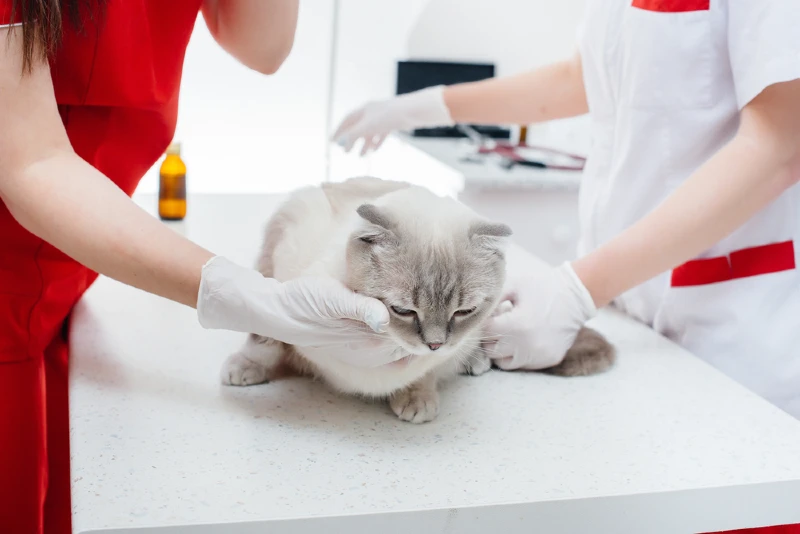
Size
These cats become very large. Males can reach up to 20 pounds, making them one of the largest breeds around. However, you can also find females that weigh as little as 9 pounds. If you want a British Shorthair of a particular size, we recommend finding a vet that breeds cats of about that size. Many breeders will guess what size their kittens will be, depending on the size of the parents.
Temperament
British Shorthairs are known for being calm and laidback. They spend a lot of their time lying around and don’t really care about much. In all likelihood, this is probably why so many of them end up overweight.
British Shorthairs are rather affectionate with their humans. They will follow their people around the house and sit near them. They aren’t lap cats and don’t like to be carried or handled much. However, they also aren’t prone to separation anxiety and do just fine on their own.
With that said, they tend to be a bit aloof with strangers. They aren’t quite as aloof as Russian Blues, but they aren’t going to follow a stranger around the house. Some may even hide under the bed. Socialization can help them be more comfortable around others. However, these cats will never be as friendly as some other breeds.
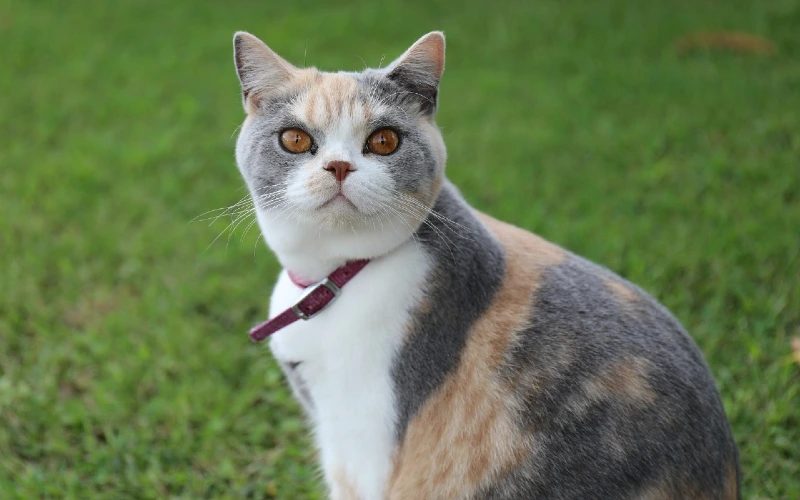
Suitable for:
British Shorthairs are a good choice for families that want a breed that can mostly take care of themselves. These felines don’t require extensive grooming, though a once-a-week brushing is recommended. They are affectionate without being needy and tend to get along well with other pets. However, they aren’t terribly cuddly and don’t like to be held.
Which Breed Is Right for You?
British Shorthairs and Russian Blues are very similar breeds. They both feature the same blue-grey fur and tend to attach very closely to their family members. Both are extremely healthy and not prone to serious genetic health conditions, though both breeds also tend to overeat.
However, these felines do differ in their activity levels. The British Shorthair tends to be much more laidback and calms down a lot in adulthood. They aren’t as active or playful. However, Russian Blues require much more stimulation. They need extra exercise to help them run off their pent-up energy, and they require more mental stimulation due to their intelligence.
Featured Image Credit: (L) Camel Case, Shutterstock | (R) PHOTOCREO Michal Bednarek, Shutterstock


